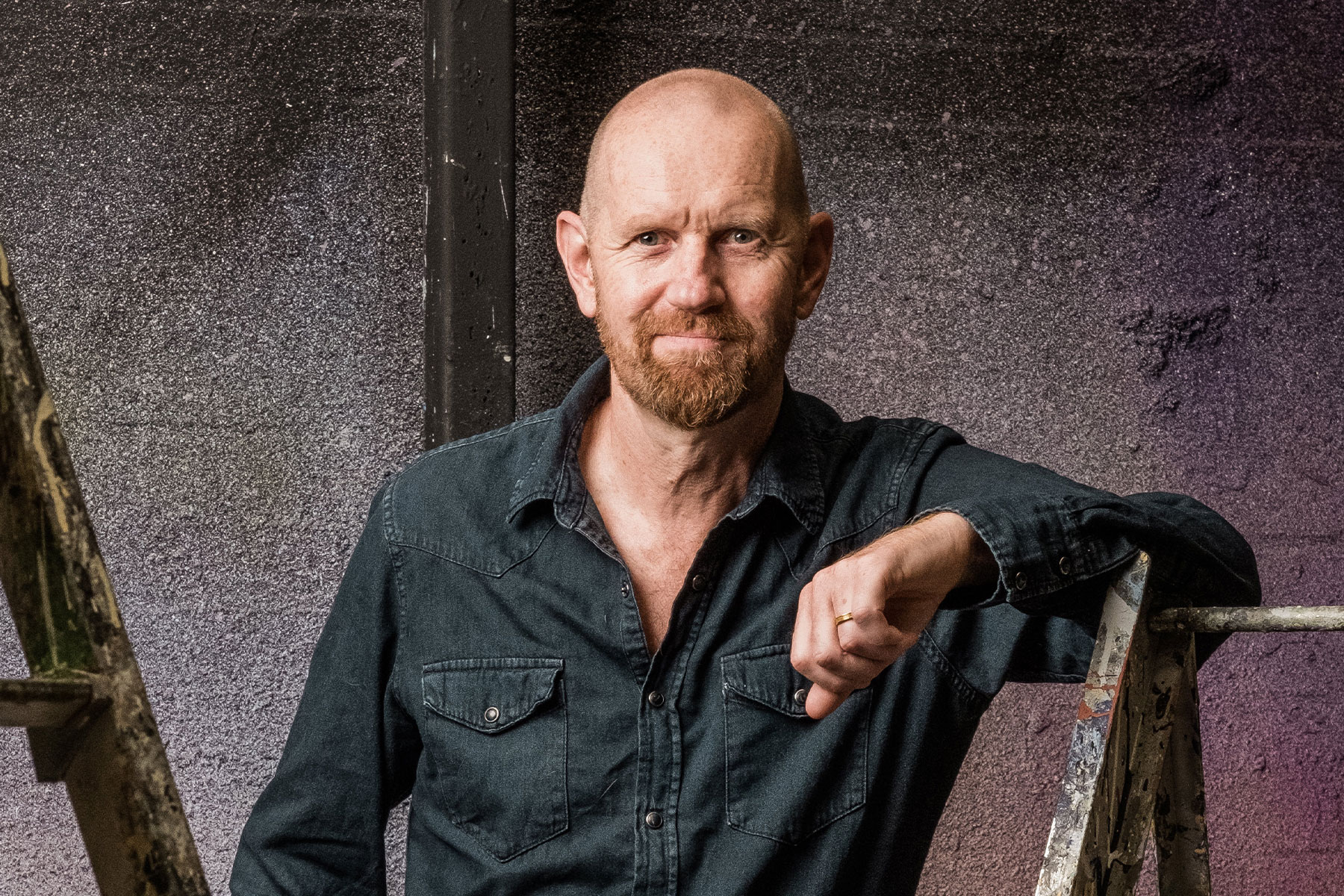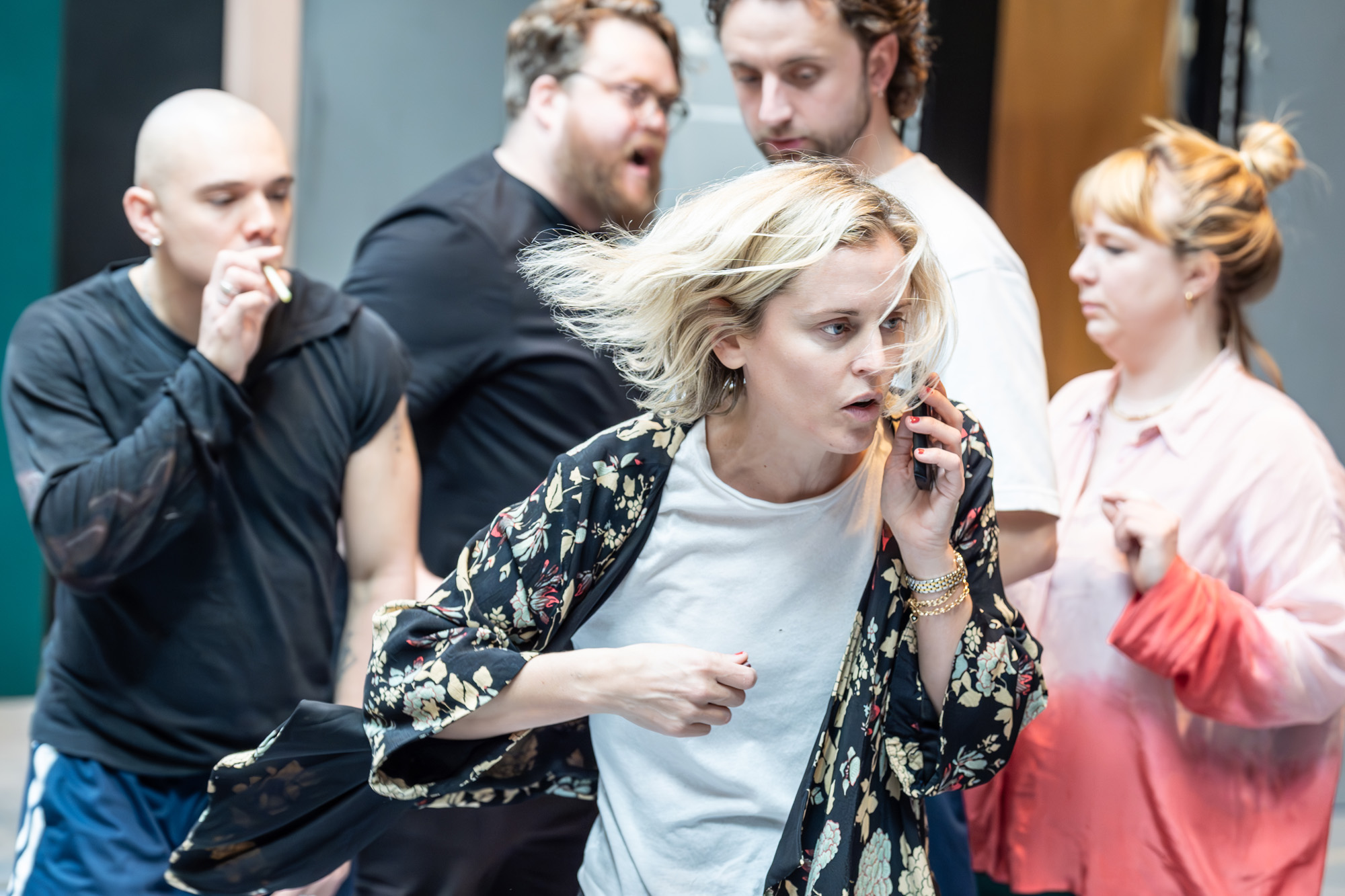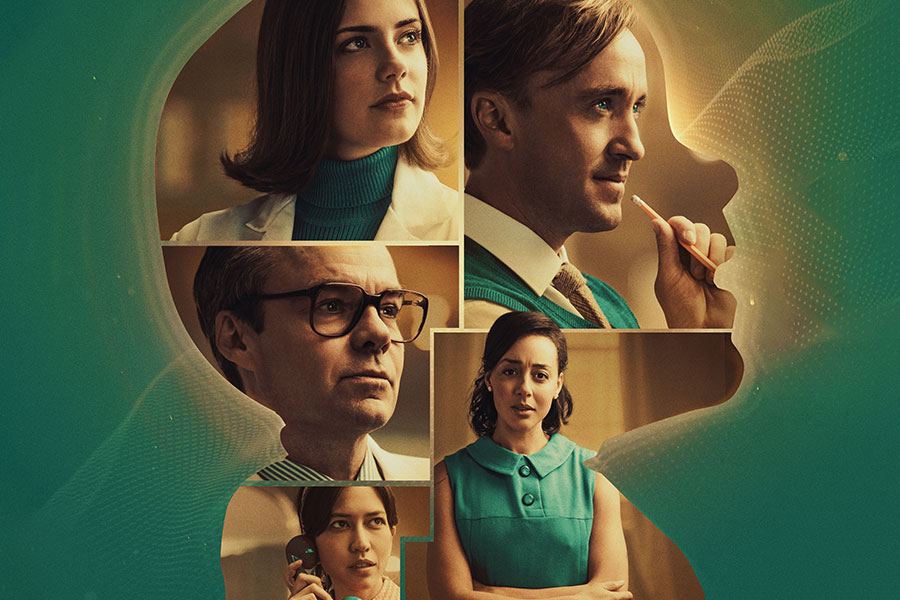Three in the Back, Two in the Head
Canadian playwright Jason Sherman was inspired to pen Three in the Back, Two in the Head after reading obituaries of fellow Canadian Gerald Bull, a weapons engineer whose work for the Iraqi government on the Project Babylon “supergun” is thought to have been a key factor in his murder in Brussels in March 1990. Watching Adam Barnard’s polished Orange Tree production, however, it’s impossible not to be reminded of David Kelly, another weapons expert whose involvement with Iraq also led to him meeting his maker in tragic and suspicious circumstances.
Sherman’s version of Bull is Donald Jackson (Rod Beacham), a weapons scientist for America’s defence programme who has been found outside a church with three bullets in his back and two more in his skull. His son Paul (Qarie Marshall) wants answers so tracks down John Doyle (Kevin Doyle), a CIA agent with whom his dad had had dealings before his death. The Langley man is anything but sympathetic: “He lived by the gun and he died by the gun,” he says heartlessly. Gradually, though, via a series of extended flashbacks the murky truth comes out.
Jackson’s vision of “peace through deterrence” compels him to dream up a prototype ‘Snowman’ missile, designed to protect North America from nuclear attack. This Star Wars-style notion is initially greeted with glee by old-school US general Ed Sparrow (Vincent Brimble). But when, after years of costly failures, the plug is pulled on the funding, the single-minded scientist takes his research to unidentified Middle Eastern country ‘SI’, earning him the undying enmity of his former paymasters…
It may have been written in 1994, but recent events bring an urgency and topicality to Sherman’s thriller. But other aspects unmistakably identify it as a decade-old drama, notably David Mamet-style dialogue where no one is allowed to end a sentence without being interrupted and where every third word is a profanity. (You can only nod in agreement when Sparrow amusingly upbraids Doyle for his bad language.) The predominantly male cast is another nod to the Glengarry Glen Ross author, though Pat Starr does make the most of her fleeting appearances as Jackson’s grieving widow Anna.
A bare white stage containing just a desk and two chairs is inventively transformed by designer Vicki Fifield into a First World War cemetery by crosses concealed in the floorboards. And while some of the acting feels a little overwrought, this provocative political piece remains a welcome addition to the Orange Tree’s impressively eclectic repertoire.
– Neil Smith










